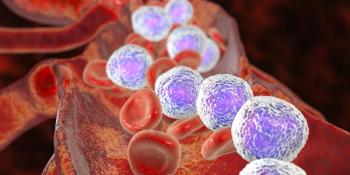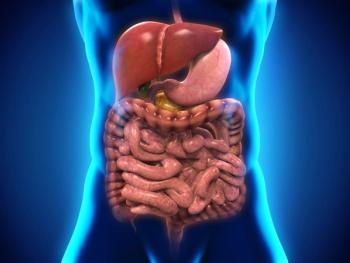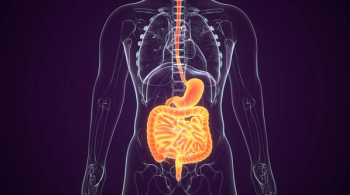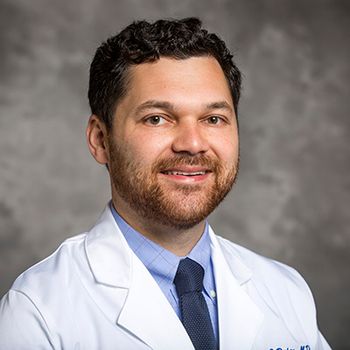
Isatuximab Combo Approved in the EU for Transplant-Eligible NDMM
Results from the phase 3 GMMG HD7 trial support the approval of the isatuximab-based combination in patients with newly diagnosed multiple myeloma.
The European Commission (EC) has approved isatuximab (Sarclisa) in combination with bortezomib (Velcade), lenalidomide (Revlimid), and dexamethasone (Isa-RVd) as an induction treatment for adult patients with newly diagnosed multiple myeloma (NDMM) who are eligible for autologous stem cell transplantation (ASCT), according to a news release from the drug’s developer, Sanofi.1
Support for the EC’s decision is based on results from the
Findings from the presentation found that after a median follow-up of 47 months (95% CI, 46-48), Isa-RVd induction therapy elicited a significantly prolonged PFS vs RVd alone (HR, 0.70; 95% CI, 0.52-0.94; P = .0184). Furthermore, the 3-year PFS rates in the respective arms were 83% (95% CI, 79%-87%) and 75% (95% CI, 70%-80%). Furthermore, the PFS benefit was confirmed on multivariable analysis (HR, 0.64; 95% CI, 0.47-0.86; P = .004), with subgroup analyses showing a generally consistent PFS benefit with Isa-RVd across clinically relevant groups.
Overall survival (OS) was not mature at the time of the analysis, with a median OS not reached in either arm at data cutoff. The 3-year OS rates were 88% (95% CI, 85%-92%) with Isa-RVd and 89% (95% CI, 86%-93%) with RVd.
“We have been on a mission to accelerate [isatuximab’s] clinical development program with the hope to bring this important medicine to as many people as possible living with multiple myeloma,” Olivier Nataf, global head of oncology at Sanofi, said in the news release on the European Union (EU) decision.1 “Today’s decision represents a prime example of those efforts, and most importantly, paves the way for [isatuximab] to potentially become accessible to even more patients in the EU, regardless of transplant eligibility or line of therapy.”
Patients with transplant-eligible NDMM across 67 sites were randomly assigned 1:1 to receive Isa-RVd (n = 331) or RVd alone (n = 329). Patients in both arms were treated with 25 mg of oral lenalidomide on days 1 to 14 and 22 to 35; 1.3 mg/m2 of subcutaneous bortezomib on days 1, 4, 8, 11, 22, 25, 29, and 32; and 20 mg of oral dexamethasone on days 1, 2, 4, 5, 8, 9, 11, 12, 15, 22, 23, 25, 26, 29, 30, 32, and 33 of 42-day cycles for a maximum of 3 cycles. Those in the Isa-RVd arm received 10 mg/kg of intravenous isatuximab on days 1, 8, 15, 22, and 29 of cycle 1 and days 1, 15, and 29 of cycles 2 and 3.
After receipt of induction therapy, patients underwent cyclophosphamide-based stem cell collection and subsequently received 200 mg/m2 of melphalan and ASCT. A second ASCT was administered if patients experienced less than a complete response (CR) after initial ASCT or for those with high-risk cytogenetics.
Maintenance therapy consisted of 10 mg of continuous daily oral lenalidomide alone or in combination with 10 mg/kg of intravenous isatuximab on days 1, 8, 15, and 22 for cycle 1; days 1 and 15 of cycles 2 and 3; and day 1 of cycles 4 to 39 for a maximum of 36 months.
The baseline characteristics of patients enrolled in the first part of the trial were well-balanced. A total of 68% and 54% of the Isa-RVd arm received single or tandem ASCT, respectively, as well as 24% and 30% of the RVd arm.
The primary end point of the trial was minimal residual disease negativity after induction and PFS.3 Secondary end points included OS, CR rates, best response to treatment, PFS2, quality of life, and safety.
According to the developers, data from the maintenance portion of the trial are forthcoming.
References
- Sanofi’s Sarclisa approved in the EU for the treatment of transplant-eligible newly diagnosed multiple myeloma. News release. Sanofi. July 25, 2025. Accessed July 25, 2025. https://tinyurl.com/nhkcn7h5
- Goldschmidt H, Bertsch U, Pozek E, et al. Isatuximab, lenalidomide, bortezomib and dexamethasone induction therapy of transplant-eligible patients with newly diagnosed multiple myeloma: final progression-free survival analysis of part 1 of an open-label, multicenter, randomized, phase 3 trial (GMMG-HD7). Blood. 2024;144(suppl 1):769. doi:10.1182/blood-2024-193308
- Trial on the effect of isatuximab to lenalidomide/bortezomib/dexamethasone (RVd) induction and lenalidomide maintenance in patients with newly diagnosed myeloma (GMMG HD7). ClinicalTrials.gov. Updated January 24, 2025. Accessed July 25, 2025. https://tinyurl.com/38cmayts
Newsletter
Stay up to date on recent advances in the multidisciplinary approach to cancer.

















































































